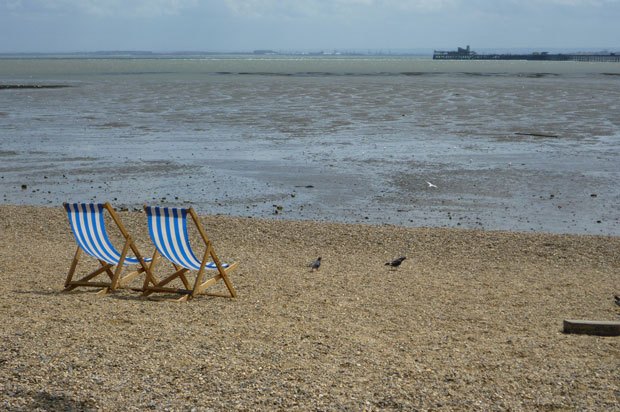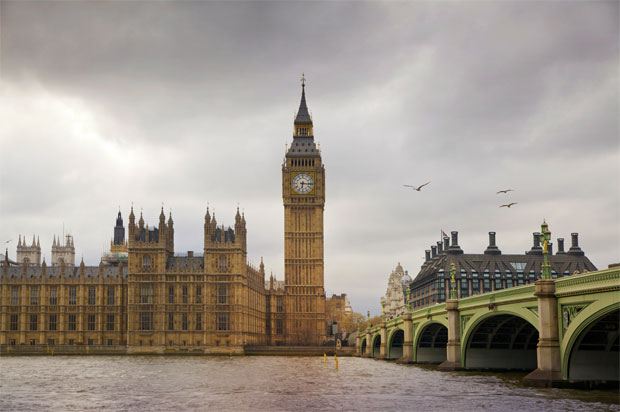Weird days out in Britain
From haunted castles to nuclear bunkers, Britain and Ireland are full of strange surprises from the past. Become a paranormal investigator for the day and uncover our weirdest tourist attractions.

How did they get there?
Britain’s secret war
In the 1950s, this coastal nature reserve near Woodbridge, Suffolk, was home to the Atomic Weapons Research Establishment, which tested the impact of atomic bombs, plus a top-secret radar testing project in the 1960s. With the Cold War safely in the past you’re left with a haunting landscape of derelict labs and eerie concrete structures to explore, as well as remnants of the area’s military history dating back to 1913. Keep an eye out for UFOs – sightings have been reported nearby.
Kelvedon Hatch Secret Nuclear Bunker, Essex
This little house deep in the Essex countryside looks like a suburban bungalow – but inside it’s a vast Tardis-like maze with blast-proof doors, intended as a shelter for 600 people in the event of nuclear war. Take an audio tour of living quarters, aircraft plotting rooms and a BBC radio studio and get thoroughly spooked by the dusty plastic models and general air of impending doom.
Stone Age kicks
If Stonehenge is too touristy, Avebury’s not far away, in a tiny Wiltshire village. The outer circle of Avebury is one of prehistory’s largest and, unlike Stonehenge, you can get right up close and feel ancient history under your fingertips. Archaeologists are still debating the significance of the place but whatever your theory, Avebury and the landscape around it make for a peaceful, magical day out.
A bus ride from Dublin, in the county of Meath, is one of the most impressive ancient sites in Europe: a huge, circular mound ringed with white stone, built as a tomb and place of worship over 5000 years ago. Follow the 19-metre long passage into Newgrange and you’ll come to an inner chamber carved with mysterious designs and lit up by the sun on summer and winter solstices. This trip really is a journey into Ireland’s past, with other sites (Knowth, Dowth and Tara) close by.
Booth Museum of Natural History, Sussex
Away from the sea-front lurks Brighton’s oddest museum: a menagerie of half a million stuffed birds and animals collected by the eccentric Victorian nature-lover Edward Thomas Booth. There’s also a mindboggling collection of insects, a killer whale skeleton, and dinosaur bones unearthed in the nearby Sussex Downs.
Museum of the Royal College of Surgeons, London
Forget Body Worlds – you’ll learn much more at this London museum, which houses a massive collection of animal and human specimens dating back to the 18th Century. From preserved bats to diseased skulls, it’s a dazzling and sometimes gruesome array that’s not for the squeamish. Elsewhere in the museum, modern surgery is the focus, with some great interactive displays.
Ghosts, ghouls and vampires
The quaint Yorkshire seaside town of Whitby has a dark side, as Bram Stoker discovered when writing his famous Dracula in 1897. The author used Whitby’s windswept cliffs as a setting for the vampire’s arrival in England. St Hilda’s Abbey, built in the 11th Century, is haunted by the saint herself, while phantom coaches and a headless ghost patrol the narrow streets. There’s even a mischievous local pixie – called a Hob – to contend with.
Wales is full of haunted castles and houses, but this 16th Century manor house tops the spooky league tables with a family of phantoms including a housekeeper, a friendly little boy, a Civil War colonel, and loads of mysterious sounds and smells. Go in winter and take a ghost tour – if you dare – while sceptics can explore the house’s Civil War-era history.
Back to nature
Bodmin Moor and the Cheesewring, Cornwall
Dramatic natural granite formations known as tors rise up out of Bodmin Moor, and the Cheesewring is among the most spectacular. Climb up to the top and look out across the moor, which stretches for 80 miles across North Cornwall. It’s also a good spot to watch out for the Beast of Bodmin, a legendary wild cat that’s said to prowl the area.
A day trip to an island isn’t as hard as it sounds: Arran is easily accessible by train and ferry from Glasgow. Once you’re there, trek out from Whiting Bay through the woods to Glenashdale Falls, or explore the stone circle on Machrie Moor. The island has good cycle routes and a bus service, but if you want to stay near the ferry port of Brodick there’s a haunted castle and a big sandy beach to investigate.
Picture of stones by John Nuttall
Next Steps
- Chat about this subject on our Discussion Boards.
By Frances Morgan
Updated on 29-Sep-2015
No featured article













